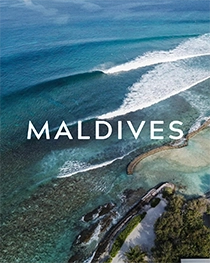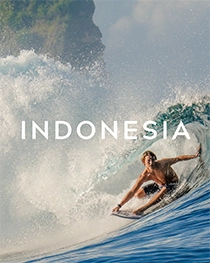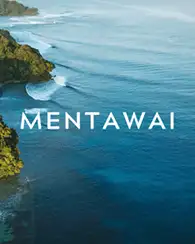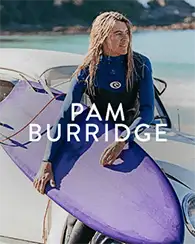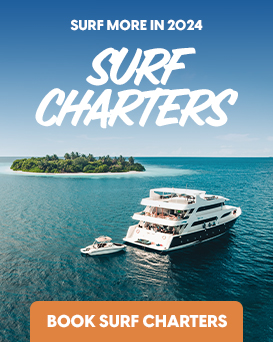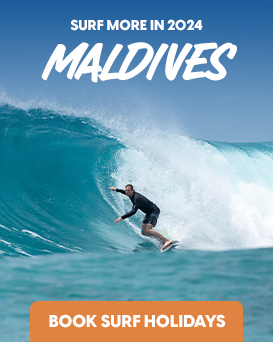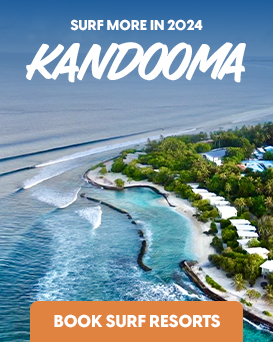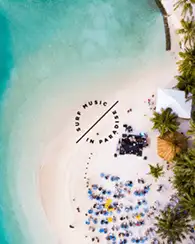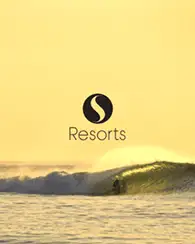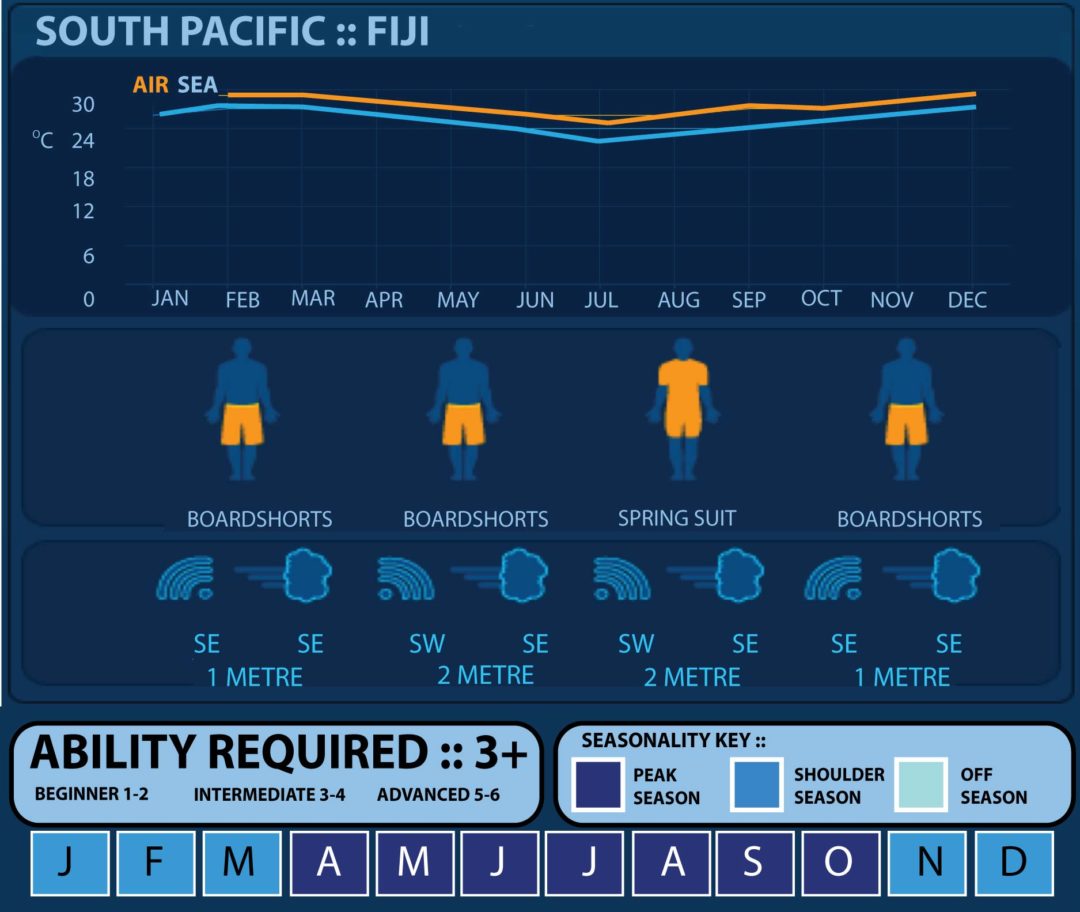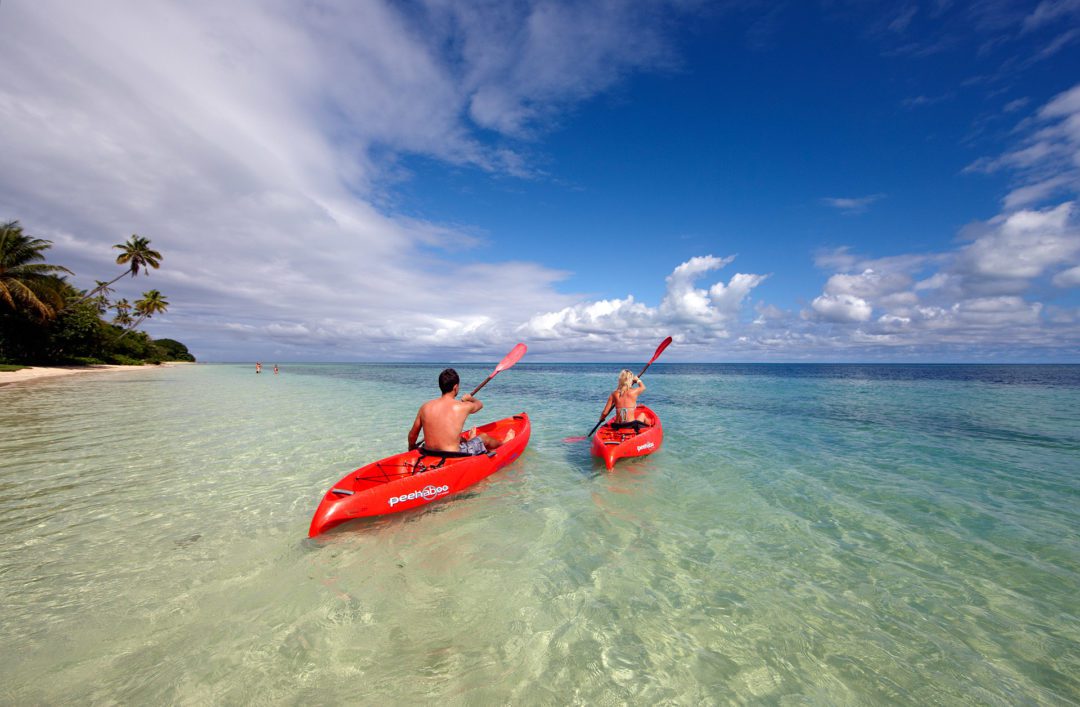Fiji Surf Travel Guide
Fiji is an incredibly diverse surfing destination, with thousands of islands and coral reefs facing every direction towards the Pacific Ocean. Unsurprisingly there are regions that stand out for exposure to swell under favourable wind directions.
The three main surf regions are Mamanucas, Coral Coast and Taveuni. Between them they offer great surfing year-round for all levels.
What we love
World class surf breaks: Cloudbreak, Frigates, Namotu & Wilkes.
Less crowded waves on the Coral Coast.
Warm water tropical conditions – Best for intermediate+ surfers.
Great range of accommodation types and options.
Mamanuca Islands surfing
This archipelago and series of barrier reefs to the South-West of the main island of Viti Levu is the definition of the Fijian surfing experience. The geography has been kind, with the SW groundswell marching out of deep water and peeling down perfectly oriented coral reefs such as Cloudbreak, Restaurants, Namotu and Wilkes. Importantly, the trade winds blow side to offshore at most reefs through the peak swell season of May to October. While most surfers have seen plenty of photos of huge, perfect waves at outer reefs like Cloudbreak, the area offers a great variety of breaks. When the swell is large at Cloudy, it’s usually half the size and ruler-lines of perfection peeling down reefs like Restaurants and Swimming Pools.
The Mamanucas are also a year-round surf destination. Although the biggest SW swells come out of the Tasman Sea during the Southern Hemisphere winter months, there is often mid-sized swells from the SW around to the SE during the summer months. At this time winds are often light and variable, with glassy conditions and many other breaks turning on with the lack of wind.
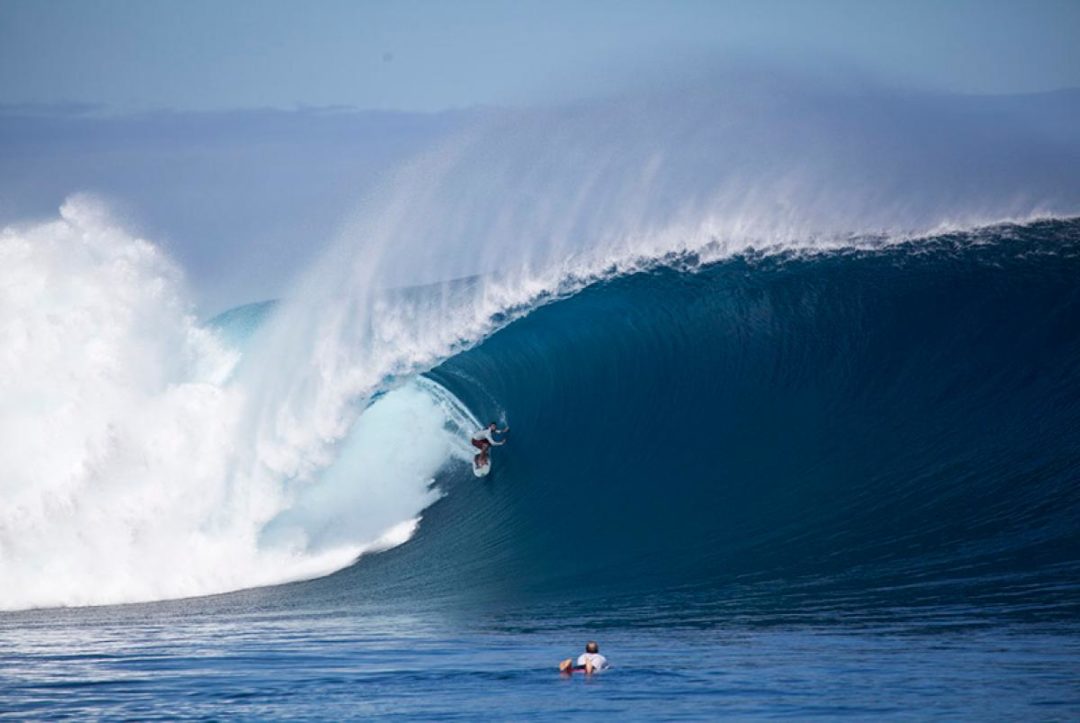

Cloudbreak
Mamanuca Islands
One of the world’s best lefts which is fun and performance oriented at three foot, but serious at six foot. Multiple barrel sections and power to burn.
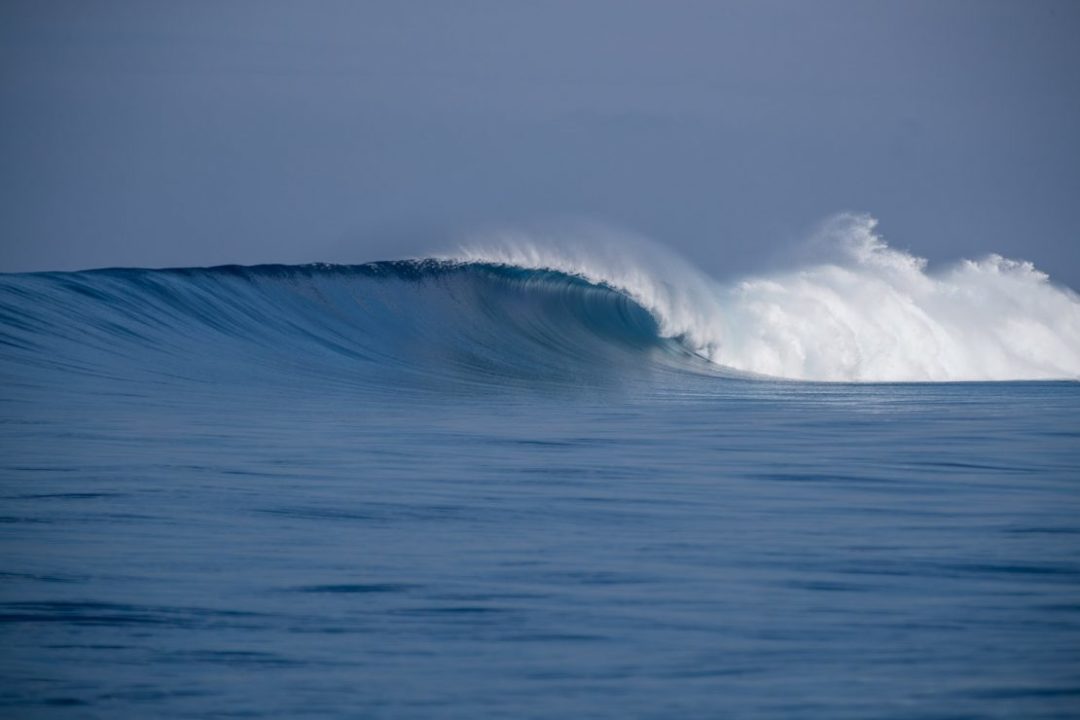

Wilkes Pass
Hollow and fast right hander, best on higher tides. Gets plenty of groundswell from the SW year round. Exposed to prevailing trade winds from ESE which blow onshore on the Rights like Wilkes from May to October. Best season at these rights is when winds are often light and variable during southern summer months (Nov – April).
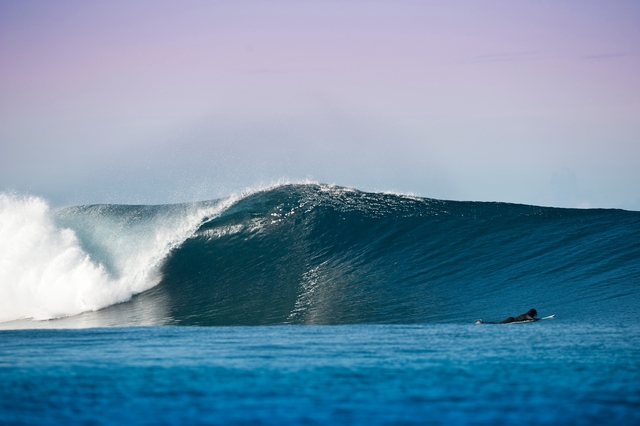

Namotu Left
Classy left exposed to SW groundswells. While not as heavy as Cloudbreak, Namotu still gets plenty of swell and can provide long walling left at all sizes with occasional barrel sections. Side to offshore in the prevailing ESE trade winds when the swell is most consistent in the southern winters months of May to October. Namotu is a year round wave and can be excellent when wind is light and variable from November to April and SW groundswells and SE swells occasionally pulse. Watch out for strong currents on the outgoing tide!
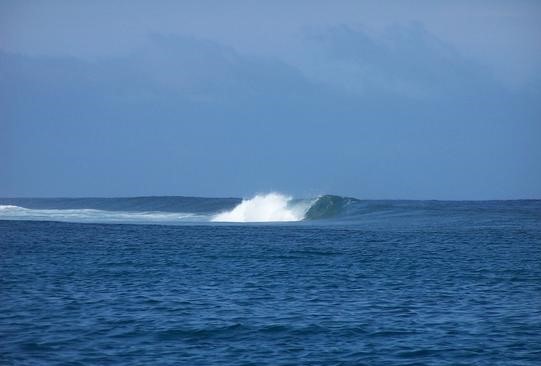

Mini Cloudbreak
Mamanuca Islands
Powerful, fast wave. The best wind direction is south-east. Best around high tide.
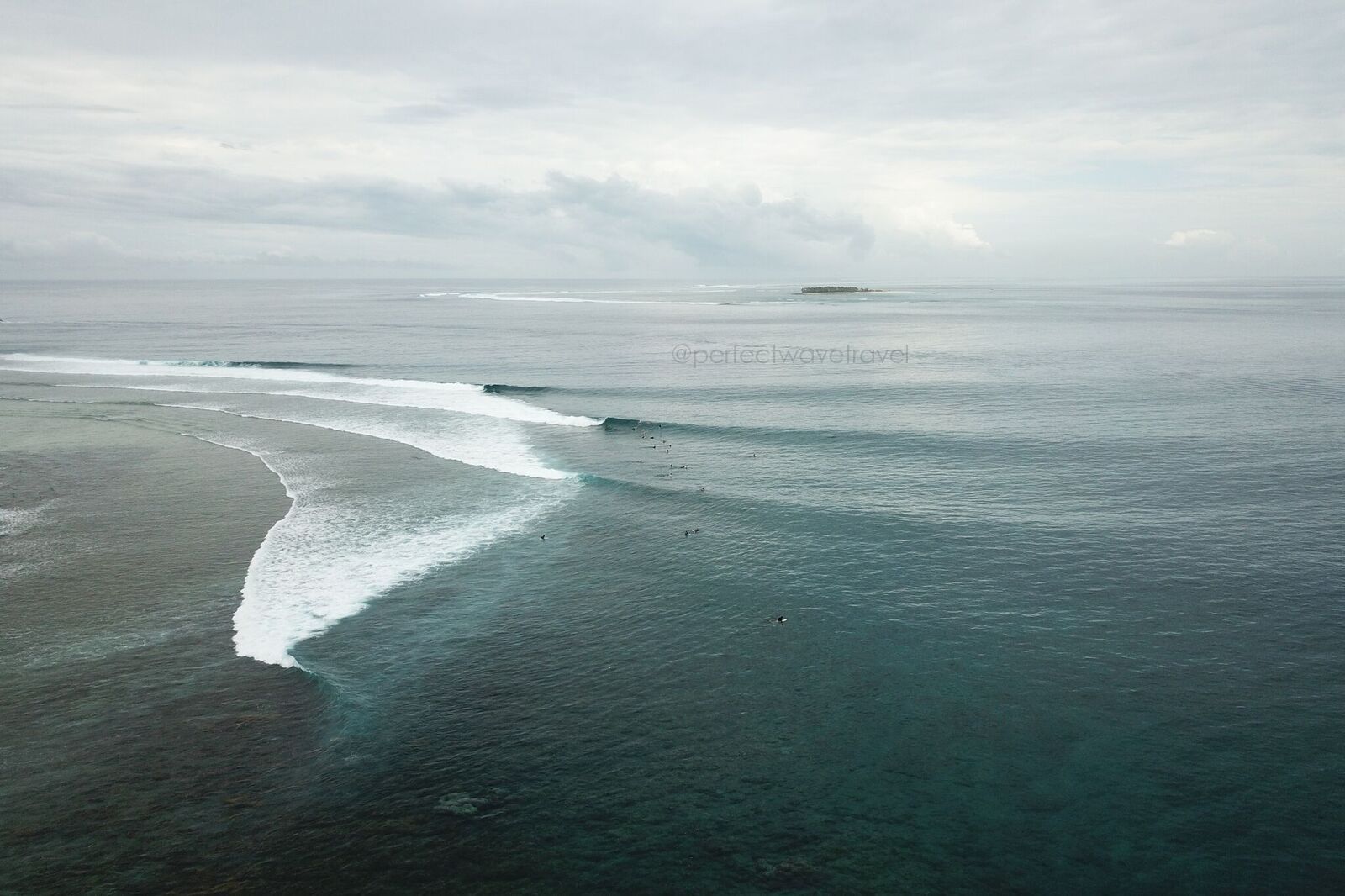

Restaurants
Long, hollow super-quick left in front of Tavarua Island. The Walls go on forever, try and keep up. Best with solid SW groundswell – when Cloudbreak is huge, Restaurants is often epic at half the size! Offshore is ESE trade winds during winter months when swells are most consistent. The strong swells required for Restaurants to break properly are less frequent, even rare in the summer months from November to April.
Where to surf on the Fiji Coral Coast?
This region is the South Coast of Viti Levu, from Natadola Beach east to Pacific Harbour and the Beqa lagoon. Enjoying much of the same exposure to SW groundswell as the Mamanucas, the Coral Coast offers some incredible waves including Sigatoga Rivermouth, Hideways (Right) and the many reefs around Matanavusi and Waidroka resorts. These south-facing reefs can be affected by the trade winds blowing side-onshore on the right handers from May to October. However, offshore lefts like Frigates Pass are a lot like Cloudbreak in the way that they get all the swell and are straight offshore in the trade winds. During the summer months. the Coral Coast is often the place to surf, with consistent SE trade swell, pulses of SW groundswell and light variable winds ensuring all breaks are glassy.
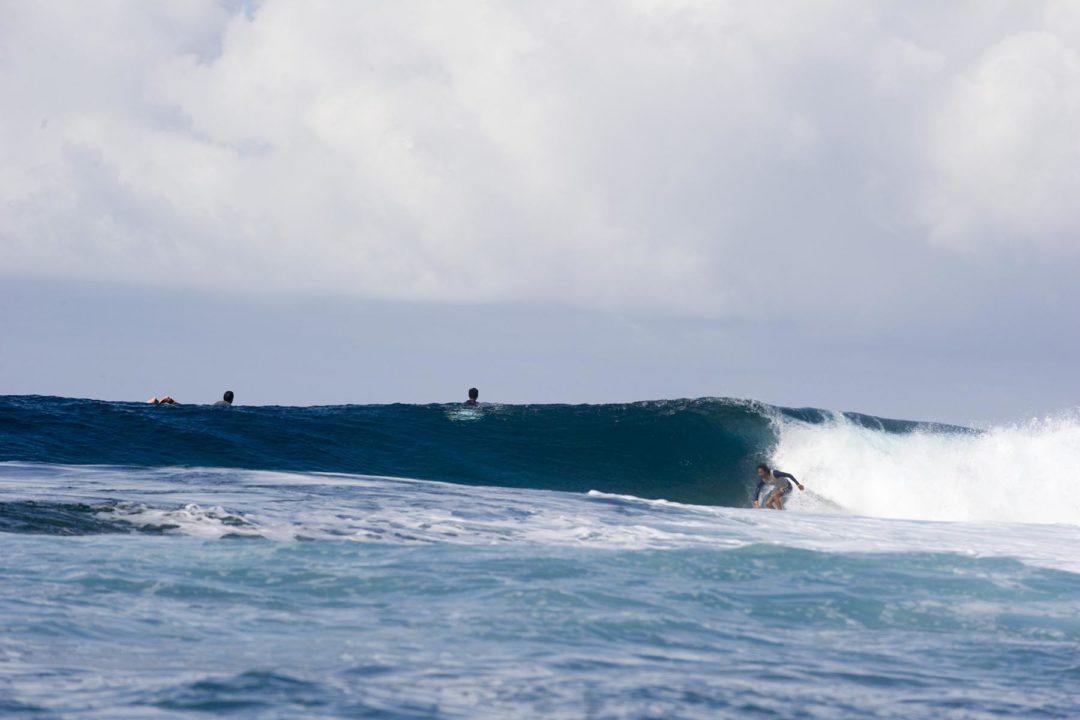

Hideaways
Coral Coast
Hideaways is a right hand reef break, only a short paddle in front of Hideaway Resort. It’s a hollow, fast, ledgey barrel, but only good around high tide. Starts working at less than 3ft and holds up to 6ft plus. Year-round wave, although it is more consistent from May to October. Side-onshore in tradewinds so best when winds are light. Recommended for experienced surfers only.
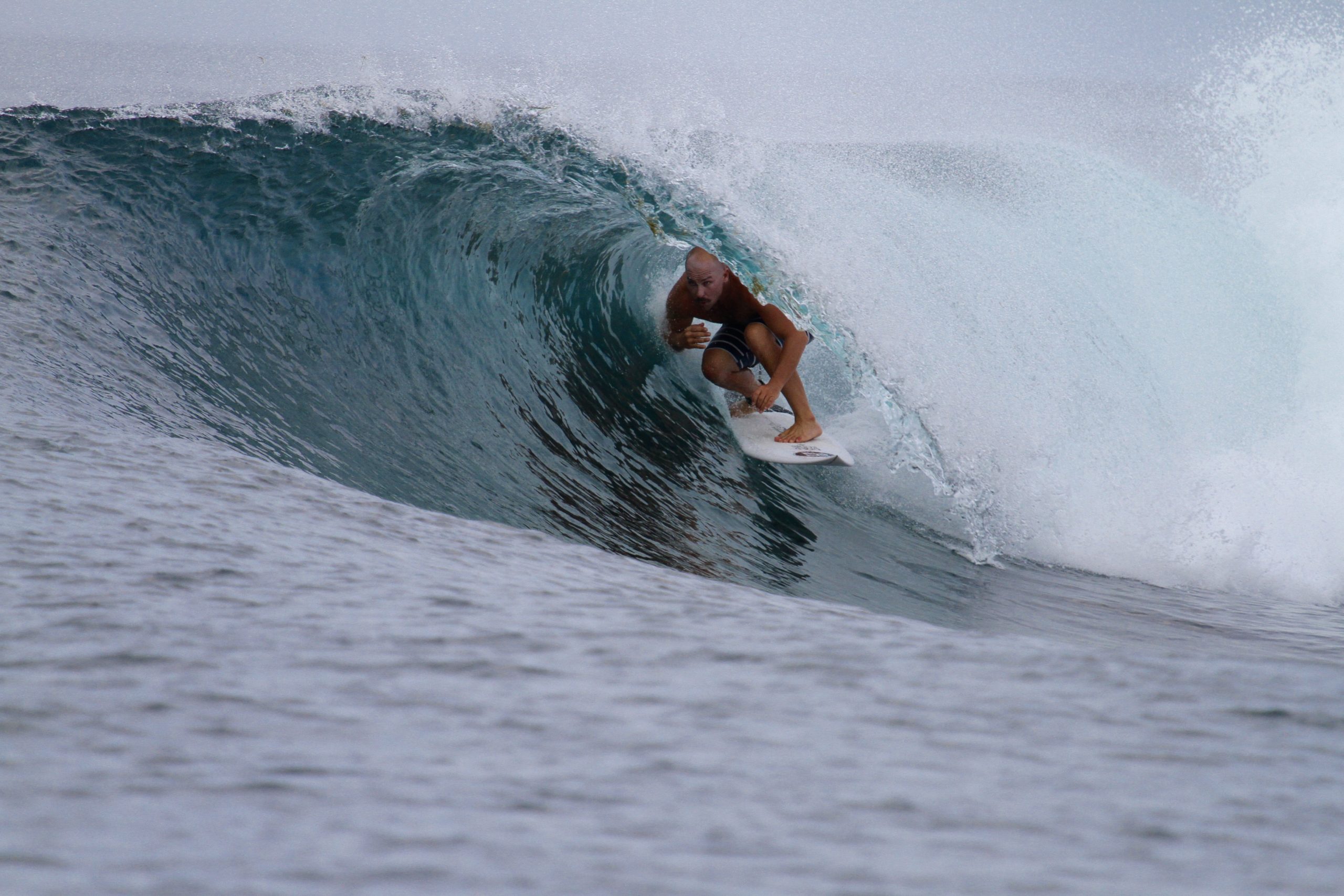

J’s
Coral Coast
J’s is a hollow, fast wave that breaks from 2’ to 6’. It’s best around the high tide with winds from NE to W. It needs some west in the swell to run down the reef.
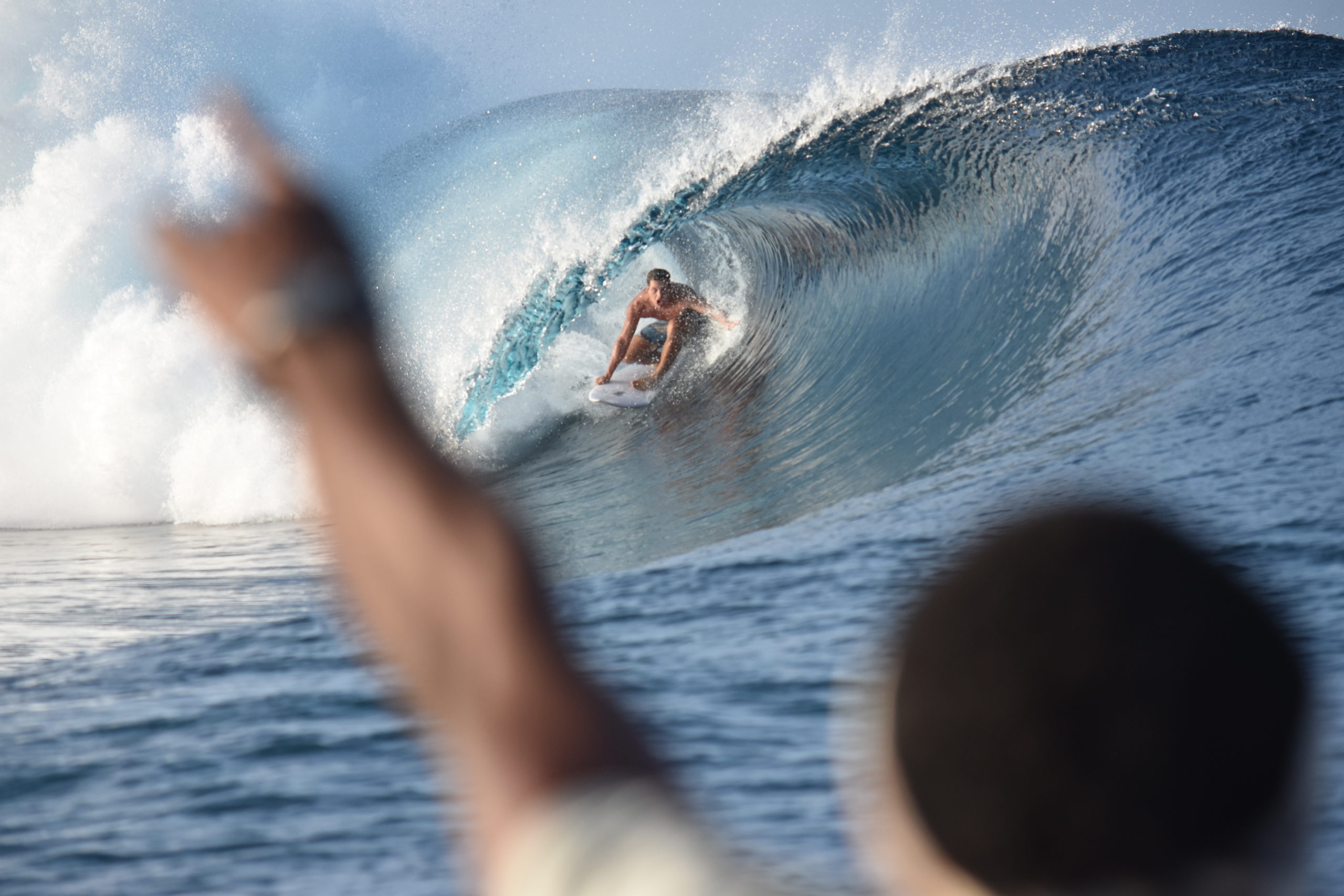

Fiji Pipe
Coral Coast
This hollow left hand barrel breaks with swell in the 2-6ft range. Short fast and powerful this wave is also offshore in a SE trade wind direction, which is dominant in the winter season March to November.
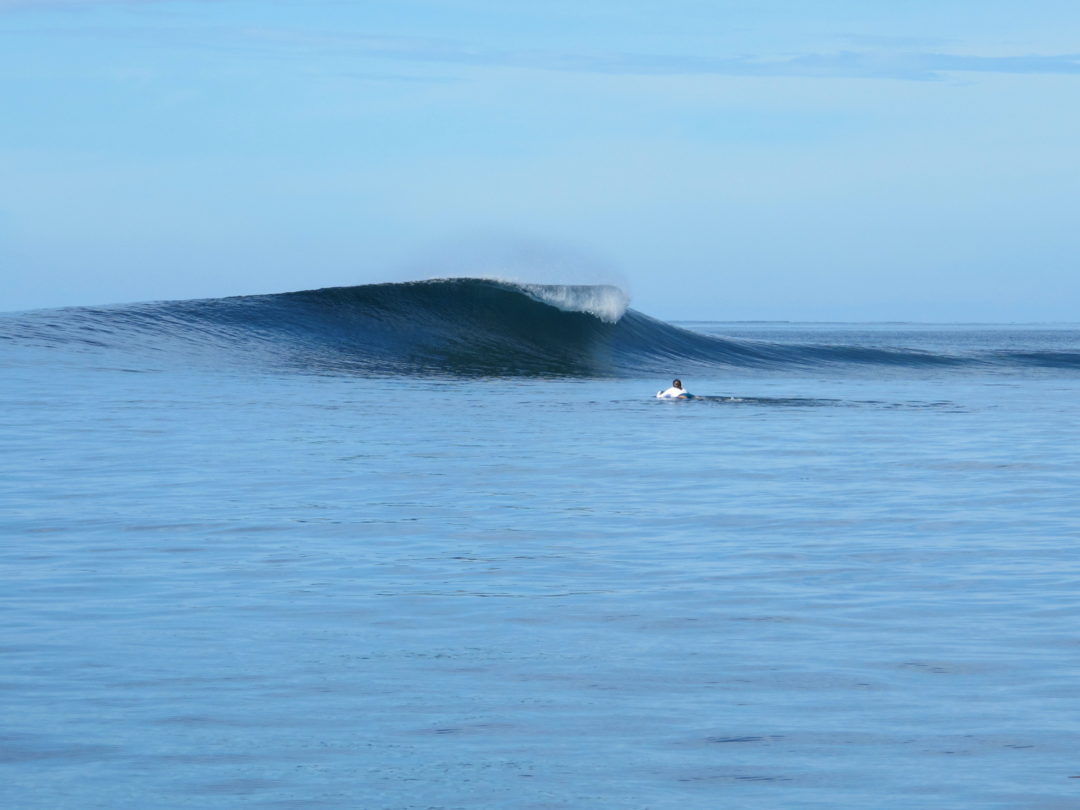

Shifties
Coral Coast
This wave has a deep water take off making the break a ‘not too threatening’ ride. This outside point of the barrier reef picks up all the swell and can be double the size of J’s and Vunaniu. It is powerful and thick. When everywhere else is flat, you can almost guarantee a 4-foot wave at Shifties. It can be surfed at all tides. Again, a wind of the north quadrant is needed.
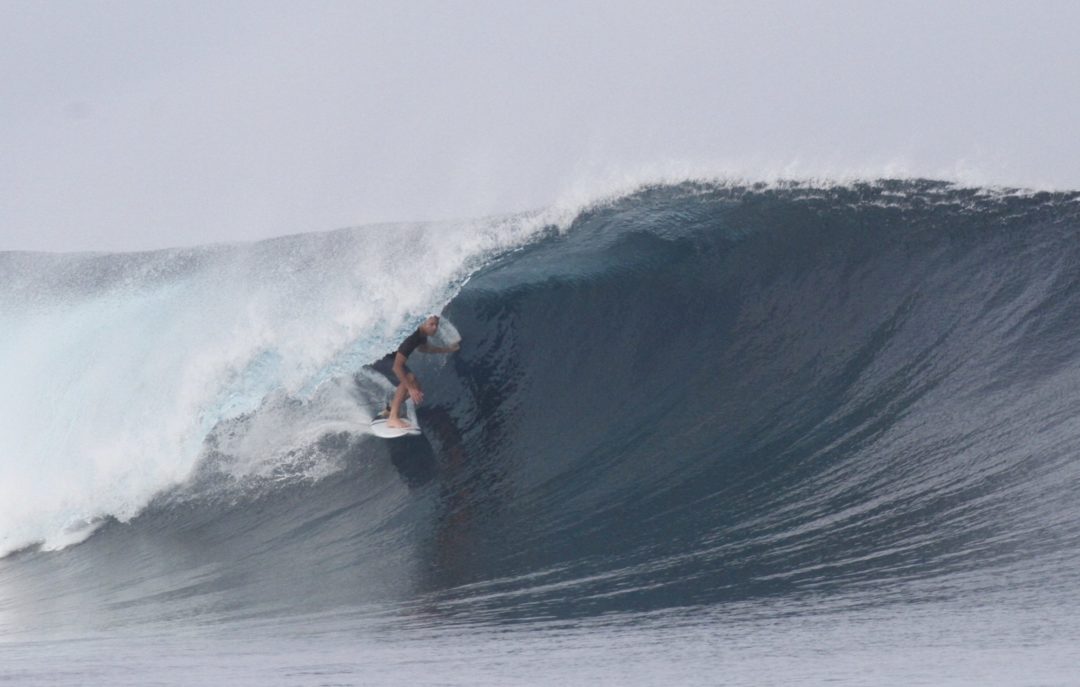

Frigates
Coral Coast
World-class left that can rival Cloudbreak for power, size and consistency. A gradual tapering reef means it can handle all swell sizes. Located offshore, a 45 minute boat trip is required from South Coast resorts.
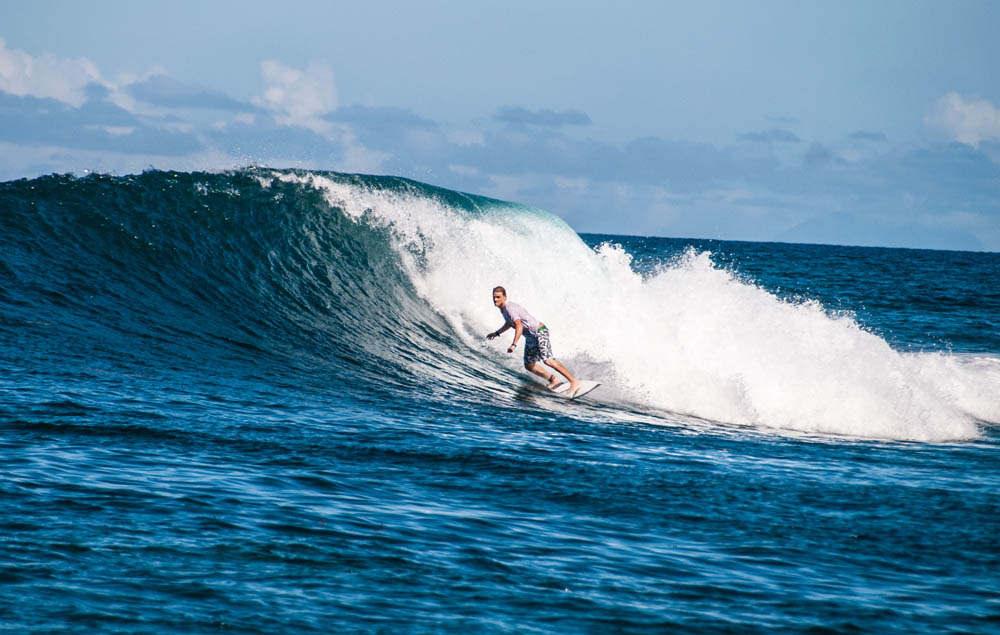

Serua Right
Great long right-hande break. Mellow take off going into hollow inside section. On medium days this is one of the longest rights surfing in Fiji offers. Works almost at all tides. Waves begins to break on outer reef and peels into deeper water.
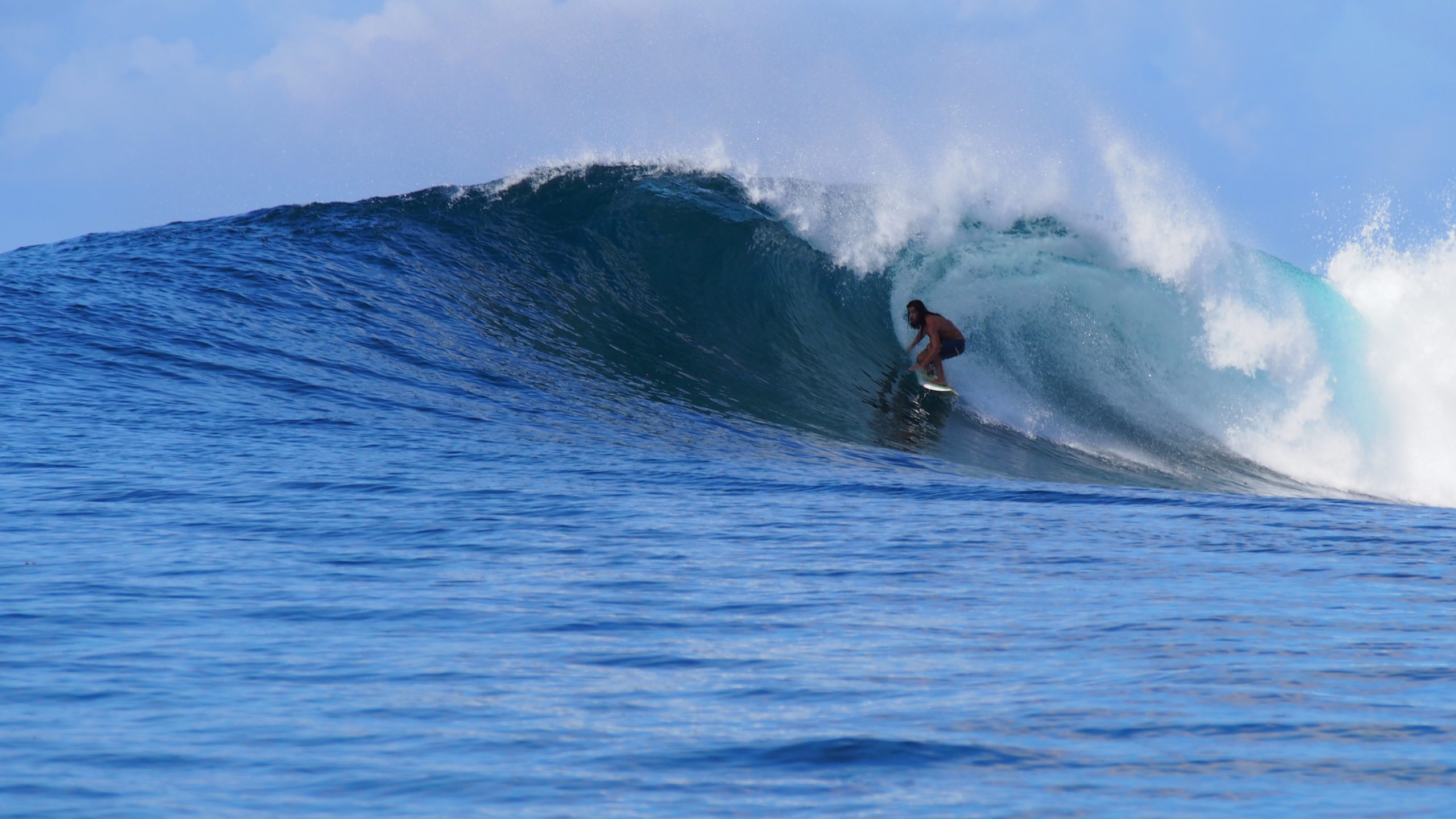

Black Rock
Coral Coast
A right hand barrel which can be tricky at take-off, but can produce the ride of a lifetime. Best around high tide due to the quite shallow coral reef close to take-off zone. Breaks at the entry of a passage which can pick up large swells.
Where to surf at Taveuni?
Located in the north western quarter of Fiji, Taveuni is totally different destination to the high-profile Viti Levu regions. With exposure to both SE trade swells and North Pacific groundswells, the Taveuni region offers a great variety of waves and options. The optimal surf season in this region is actually the southern hemisphere summer months (Nov – April), when winds are often light or slack and the reefs offer glassy waves. The swells can come from the North Pacific as both longer period groundswells or mid period trade swells from the other side of the equator. At the same time SE swell can push up from both trade winds and low pressure systems east of New Zealand
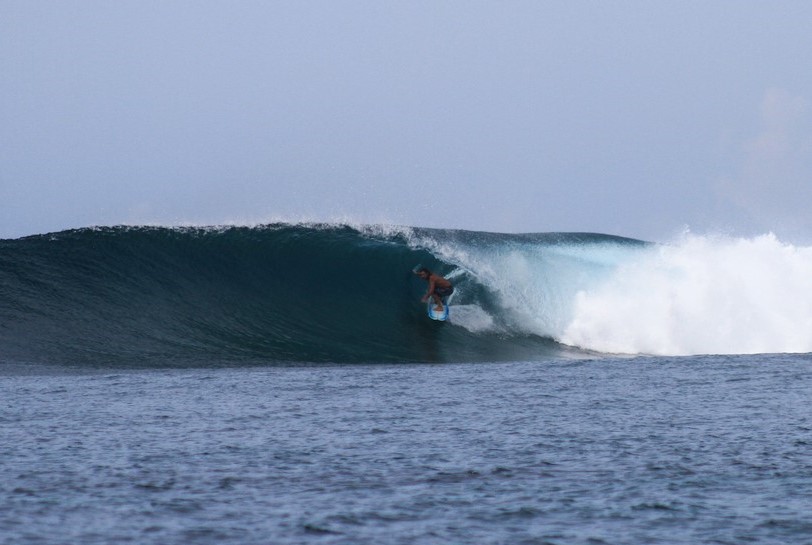

Maqai Point
Taveuni
Long world class wave that works on all tides, can offer barrels, rippable walls and is suitable for intermediate to advanced surfers. Can be surfed from small to huge. Prefers winds out of North quarter
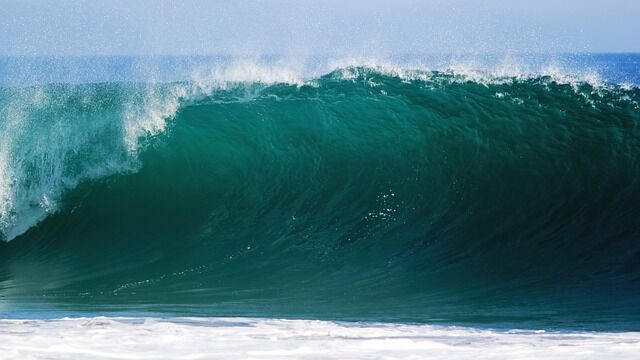

Kavas
Taveuni
Fast, occasionally hollow left for experienced surfers. Works in ESE trade winds so a good option during southern winter months. Best on higher tides
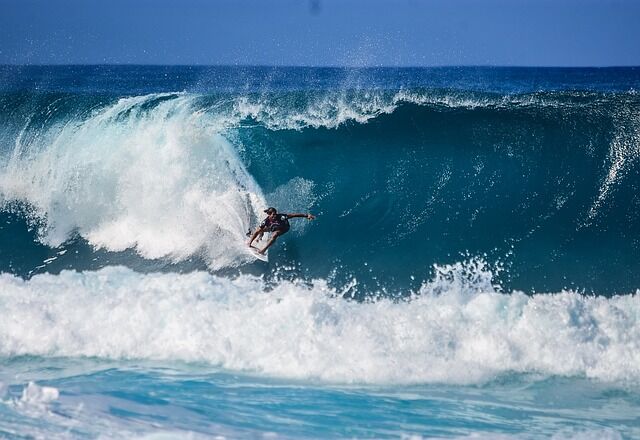

Bula Bowls
Taveuni
Long, user friendly left in smaller swells. Can offer big barrels on larger groundswells Handles winds from east to north so can be an option in winter trade winds
When is the best season to surf in Fiji?
March through November is generally the best time for surfing Fiji as the southeast trade winds blow cross/offshore and low-pressure systems in the Tasman Sea provide consistent SW swells. Despite relatively minor tidal ranges, most reefs are very shallow and are affected by low tide, while water temperatures sit at a balmy 27-28°C all year round. The southern summer months enjoy light and variable winds, opening many more waves that suffer under the trade winds.
Attractions
Fiji is most famous for its palm-lined beaches and crystal-clear waters, however there’s more to this vast archipelago than great waves. From zip lining over a rainforest, to horseback riding on the beach, to stumbling upon a hidden waterfall or visiting a Fijian village and drinking Kava with the locals this is a country that always open its arms and its beautiful environment to all guests.
The Country
Fiji has one of the most developed economies in the Pacific, but since independence from Britain after a century of rule in 1970 has seen some political instability, mainly due to tension between indigenous Fijian and the ethnic Indian communities. The archipelago consists of some 300 islands, although only 100 are inhabited. The locals are known for their hospitality, and tourism, along with sugar, is the biggest industry.
Getting There
Nadi International Airport, near Suva is the main airport which is a four-hour flight from Australia. Many international visitors come via through New Zealand, which is a three-hour flight away. Airlines that have regular flights to Nadi are Air New Zealand, Air Pacific and Qantas Airways.
Travel Information
Time Zone
UTC +12
Currency
Fijian Dollar
Calling code
+679
Electric
240V





